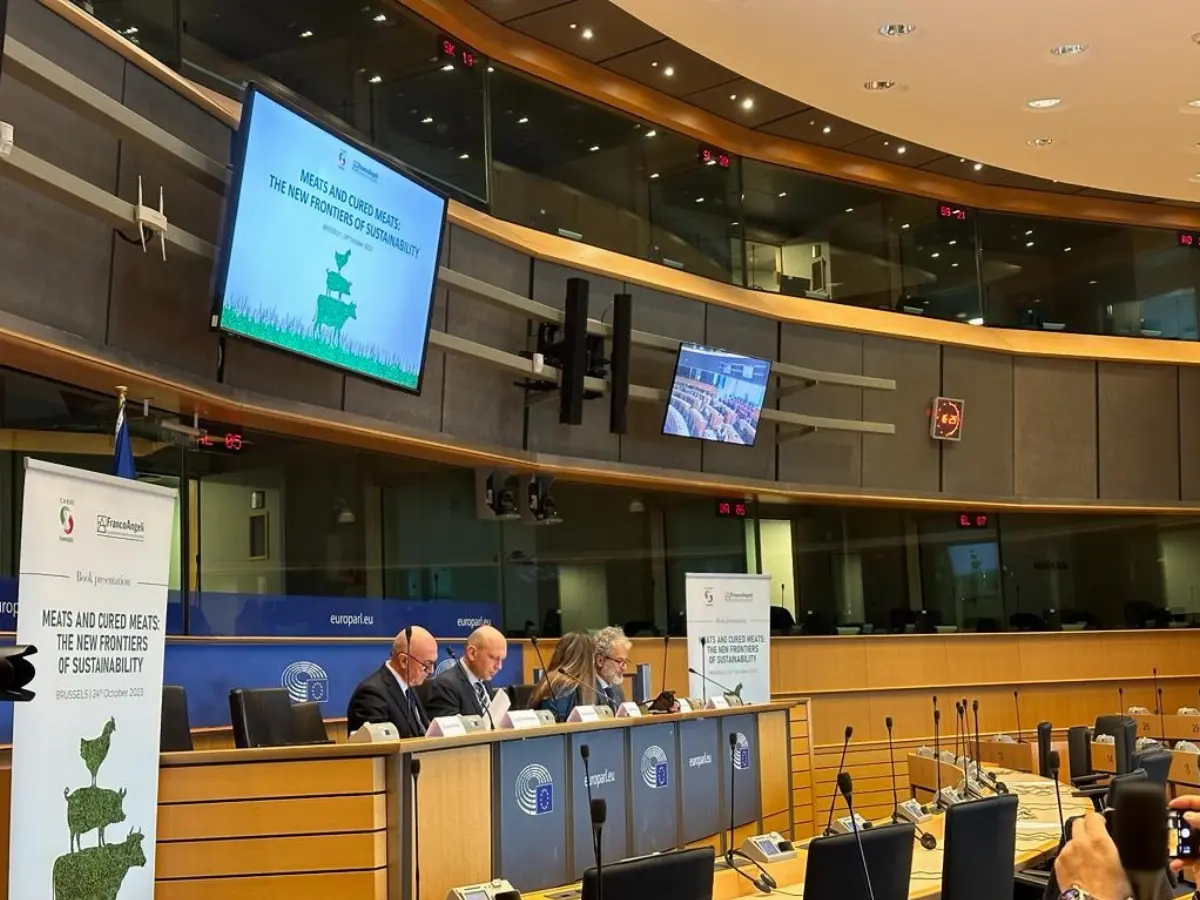
Agro-zootechnical emissions weigh only 4.6% in the EU
New data presented in Brussels disproves clichés about pollution facebook sharing button twitter sharing button

Agriculture is the only human activity that sequesters it in addition to emitting carbon. The numbers in the volume “Meats And Cured Meats: The New Frontiers of Sustainability” presented to the European Parliament.
The European livestock sector represents 38.5% of the entire agricultural sector for a value of 206 billion euros with approximately 4 million employees. This is the photograph taken today at the European Parliament during the presentation event of the book “Meats And Cured Meats: The New Frontiers of Sustainability”, written by Elisabetta Bernardi , Ettore Capri and Giuseppe Pulina (Franco Angeli Publiching). The event was introduced and promoted by the MEP Salvatore De Meo, president of the Constitutional Affairs Commission and member of the Agriculture Commission, and saw the participation, as well as the authors, of Luigi Scordamaglia, managing director of Filiera Italia.
“Today the European livestock sector is at the center of the environmental challenge”, said the Honorable De Meo in his speech, “but the transition must be pursued in a pragmatic, non-impositional and above all non-ideological way. Sustainability, which is the objective towards which we must continue to strive, must necessarily be combined with economic and productive development. Businesses and citizens must be helped and accompanied on the path to the green transition. The hope is that the next legislature will move along this path, recognizing the enormous value that the entire European agricultural sector also expresses in the fight against climate change and the green transition".
Giuseppe Pulina , professor of Ethics and Sustainability of Livestock Farming at the University of Sassari and president of Carni Sostenibili, expressed his opinion on the environmental impacts of the sector. “The entire agricultural sector in Europe has reduced its emissions by more than 18% between 1990 and 2021,” explained the professor. Agriculture is the only human activity that, in addition to emitting carbon, simultaneously sequesters it. This is why, even when we talk about animal husbandry, we must not only talk about climate-changing emissions, but about the balance between these and carbon sequestration by agroecosystems. “But there is more”, adds Pulina, “in recent years the scientific community and institutions have highlighted the need to develop new metrics to calculate emissions, capable of taking into consideration the type of climate-changing gases and their permanence in the atmosphere ”.
Already in 1990 the IPOC stated that all the metrics used up to then had limitations and uncertainties. And precisely to fill this uncertainty, a radical revision of the metrics was proposed by the team of atmospheric physicists at the University of Oxford with several publications in scientific journals of the Nature group. “Recalculated in this way, the emissions of the entire European agricultural sector would not account for 11.8% (or 4.6% if compensated by reabsorptions) of the total, but would even become negative”. How can we explain, however, such a reduction in impacts, to the point of even making them negative? “The study by Oxford researchers takes into consideration for the first time the difference in terms of action on global warming between short-lived climate pollutants, such as methane, and long-lived climate pollutants, such as carbon dioxide”, explains Pulina , underlining that "the new metrics take into account this difference and in particular how long a gas remains in the atmosphere, a substantial difference if we consider that methane has a half-life of approximately 10 years, while carbon dioxide remains in the atmosphere for about a thousand years."
(1- more)
EFA News - European Food Agency